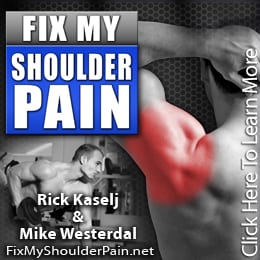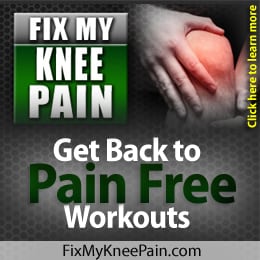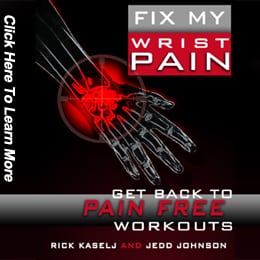When Not to do Corrective Exercises with Jim Kielbaso
Today, I have another video interview for you and we are going to talk about corrective exercise versus motor learning.
When NOT to do Corrective Exercises
CLICK HERE to watch the YouTube video.
I have Jim on the line and we are going to talk about corrective exercises and motor learning. Starting off with things, Jim I am going to get you to introduce yourself to the viewers, listeners, and readers.
Jim Kielbaso: Sure. My name is Jim Kielbaso and I am from Detroit, Michigan. My name sounds like a sausage with the ‘O’ on the end, that’s people always assume.
Rick Kaselj: I didn’t even think of that.
Jim Kielbaso: Well everybody else thinks the same. I run a private sports group balance training center up in Detroit and I also have a couple of websites, my own blog at http://MaximumFootballTraining.com .
I like to write. I have written a couple of books about speed & agility training and strength & conditioning. I am glad that we are going to talk about some of this stuff.
Rick Kaselj: I like interviewing people from Michigan because people in Michigan understand ice hockey and you can have a great conversation about ice hockey. I am from Vancouver and I am a fan of the Vancouver Canucks.
Jim Kielbaso: Yes, hockey in Detroit is huge. You may or may not know it being out there but they call this place the hockey town because there are so many people playing hockey and we have got lots of hockey guys and even hockey Pros that come in here. So yes, hockey is big in Michigan for sure.
Rick Kaselj: I know now. Even in July all they talk about in Vancouver.
Jim Kielbaso: Oh, yeah!
Rick Kaselj: We’ll get to the topic that we are going to talk about. Maybe we’ll start initially when it comes to your athletes, and then we are going to talk about corrective exercises and motor patterns / motor control. But maybe we will take a step back when it comes to how do end up assessing your athletes?
The Best Assessment Tool
Jim Kielbaso: Well, I may do it slightly different than the other people do. I run them through a lot of different things. But one of the big assessment tools that I use is just my “eyes” watching an athlete move. We do some things that are similar like to the FMS. We do some objective tests like running 40’s, drills, and vertical jumps to test strength and all of that.
The big part of the assessment is just kind of evaluating the movement quality the person has and there is really not anything so far that I can lay out or write out and say this is all you are looking for because everybody is going to move differently and everybody has different movement, goals, and needs depending on the sport and their condition.
You know when I started talking or writing about movement training, I was actually talking about movement like run, jumping and cutting, turning and twisting and all the things that we do out on the field. And then movement kind of turned into a set of tests, I guess that is kind of my opinion of it. Like squats and step over, these things. And I am not saying that they are bad, it’s just that I look at movement in a larger kind of frame work.
I will analyze the way a person is running and from there I will see if they are not running properly for example because they have poor motor learning or poor motor development or poor motor skills, or is there something limiting them that a corrective exercise needs to address.
What to do If Someone Does Not Get Their Knees Up When They Run
For example, let’s take somebody who is not getting their knees up high when they are sprinting.
- Is the problem a motor learning problem and they just don’t know how to run properly and it doesn’t feel right?
- Do they have something inhibiting them and blocking them?
After we do the movement assessment we will go into more of the joint by joint approach to see if that is what is inhibiting them or is it just that they learned it wrong.
Rick Kaselj: Okay, I like that. You know there isn’t like one assessment tool that you end up using, it ends up being multiple things. It might be you are looking at a specific joint when it comes to an assessment. It might be a specific task that has grading within it. And it is just kind of utilizing your eyes to see if they are moving properly and then you have the proper motor learning to do that movement correctly.
Jim Kielbaso: Yes, exactly. What I found in my experience is that lot of the time it’s not really a corrective exercise that needs to be addressed first, it’s the movement quality.
A lot of people have just over the course of years learned how to move wrong and those motor patterns got engraved in their body so when you ask someone who doesn’t run with their knees up high enough to get their knees up, it feels really bad. It feels very awkward to them so they almost resist or fight doing it because it feels so bad.
But then if I ask, “Can you stand on the ground and just lift your knee up?” If they can get it up and they can get themselves into that position, then most likely I realize that it’s not something that a corrective exercise needs to do or address because they can actually perform the movement, but they are just not doing it when it comes the time to perform.
Corrective Exercise versus Motor Learning
Rick Kaselj: Okay. Looking at that so you got to make a decision and it needs to be a corrective exercise focus or a motor learning focus.
What would be the next step? Let’s go with the example you talked about regarding high knees or bringing the knees high enough when they are running or sprinting.
What would be an example when it comes to the corrective exercise that you might do in order to address something that has come in your assessment or a motor learning focus based upon something that has come up in the assessment?
Jim Kielbaso: Sure. Again in that example, for somebody who is not getting their knees high enough or they are not getting enough separation between their limbs when they are sprinting, what we will maybe do is first check their hip flexors flexibility to see if they are able to get into that open position when somebody is running like a knee to knee opening.
Maybe check their hip flexor strength and abdominal strength.
Can they get their knee up into that position or is it something that is not really strong enough to get up there? It could be a postural type of thing.
Maybe they have a super exaggerated injured pelvic tilt and it is limiting their knee drive because there is something blocking it because they are tilting the pelvis too much.
That may be where we say “Okay, well we are going to have to increase flexibility or mobility here or we are going to have to change your posture or maybe we will have to do some strengthening” that is where maybe the corrective would come in.
If it’s not one of those things and they seem to be able to physically get themselves into those positions, then we start doing what we call coaching at that point. We are teaching the person how to move so we would be doing strength type of mechanics drill, wall drills where they can get their knees into the position that they should be but kind of at a slower pace and we could stop them at every single stride and let them feel what it is supposed to be like.
We do a lot of treadmill sprints, inclined treadmill sprints in front of the mirror so the athlete in the middle of the sprint can actually hear us giving them the feedback on whether or not they are getting their knee high enough and then they can hear us saying it in the middle of the sprint. They can look in the mirror and see what it looks like and when they make the correction and start getting their knees up they will hear us immediately saying, “Yes. Yes. That is exactly where it should be” and then they can see it in the mirror so they can start seeing, feeling, hearing all while they are doing it.
Basically we are trying to trick their nervous system into feeling like this is what is right. This is what you wanted to feel like even though it feels completely awkward, that’s the right thing. And then from there it’s just the matter of continuous coaching and doing rep after rep of that kind of thing. That is a pretty simple version of it.
=============== End of Part 1 ===============Jim Kielbaso MS, CSCS is the Director of the Total Performance Training Centers in Michigan, a former college strength coach and the creator of multiple strength and conditioning products. He recently created a program for football coaches/players that covers all aspects of athleticism, delivers great results and allows plenty of time and energy to be spent on football-specific sill work. The program is called Maximum Football Training and can be found at http://MaximumFootballTraining.com .
Rick Kaselj, MS.



